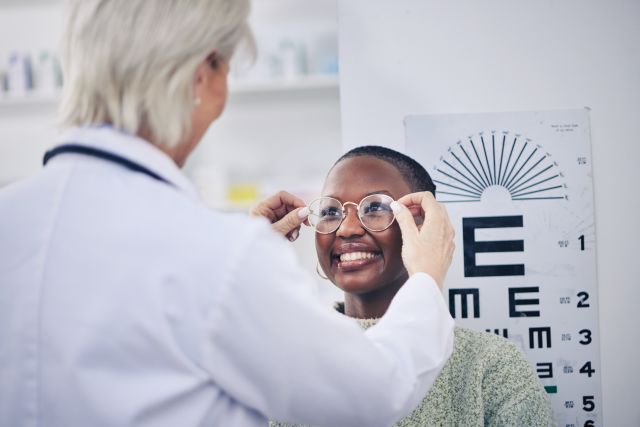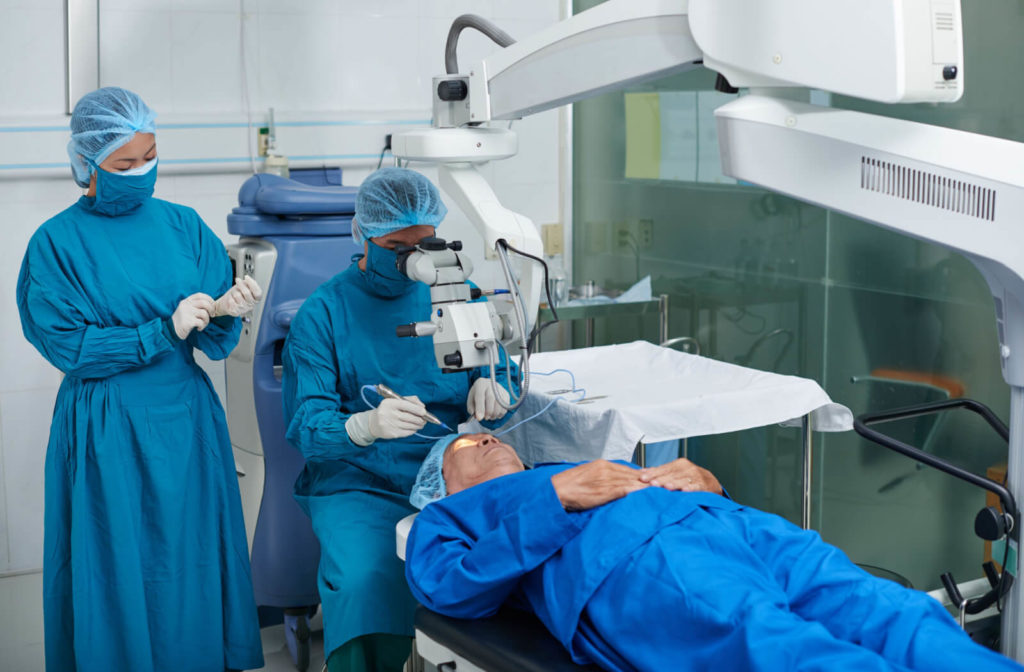The Comprehensive Eye Exam: What to Expect Throughout Your Visit to the Eye Doctor
A check out to the eye doctor for a comprehensive eye test is more than a regular check-up; it is an essential step in securing your visual health. What precisely happens throughout the eye health and wellness evaluation, and how does it affect the prescription process?
First Examination
The initial appointment during an eye test acts as an essential structure for comprehending a patient's aesthetic health needs. This phase sets the tone for the whole assessment procedure, allowing the eye doctor to collect vital information regarding the patient's case history, way of life, and particular vision problems. By thoroughly reviewing any kind of pre-existing conditions, medications, or previous surgeries, the eye care expert can customize the examination to attend to specific needs successfully.

Furthermore, the first consultation is an opportunity for patients to articulate any kind of inquiries or problems, cultivating a joint connection with their doctor. This communication not just makes certain that the person really feels notified and comfortable but also encourages them to participate proactively in their eye health monitoring. Collectively, these discussions make it possible for the eye doctor to create an individualized assessment plan, ensuring optimum treatment and accurate medical diagnosis.
Aesthetic Acuity Test
Starting the core elements of an eye examination, the aesthetic acuity examination is made to evaluate the intensity and clearness of a person's vision. This critical examination helps determine just how well a person can recognize letters or symbols at a standard range, usually making use of a Snellen chart (Optometrist Riverside). The chart consists of rows of letters that decrease in size from leading to base, with the client placed at a normal distance of 20 feet
During the test, the person is asked to cover one eye and read aloud the tiniest line of letters they can see plainly. This procedure is repeated for the other eye. The results are videotaped as a portion, with 20/20 vision indicating regular aesthetic skill-- where the patient can see at 20 feet what an individual with normal vision can see at that range.
The visual acuity test additionally identifies prospective refractive errors such as nearsightedness, hyperopia, or astigmatism, which could demand corrective lenses. By establishing a baseline of visual performance, the examination is a vital analysis device that assists the eye treatment specialist in creating an appropriate treatment plan tailored to the patient's unique visual needs.
Eye Health Assessment
Complying with the visual acuity test, a thorough eye wellness evaluation is conducted to make sure the total well-being of the eyes. This critical section of the eye examination entails a complete assessment of both the interior and exterior frameworks of the eye.
Following, focus get more shifts to the interior structures. With using ophthalmoscopy or fundus photography, the retina, optic nerve, and capillary are meticulously evaluated. This step is vital for identifying problems such as retinal detachment, glaucoma, or diabetic person retinopathy. In a lot of cases, student extension is done to boost exposure check here of the internal eye structures, although this may result in momentary light sensitivity for the individual.
Furthermore, intraocular pressure is determined to evaluate for glaucoma risk. This is normally done making use of tonometry, which can discover raised pressure levels that may recommend prospective damage to the optic nerve. Collectively, these assessments create an extensive evaluation to preserve eye health and wellness.
Refraction and Prescription
Refraction is a sophisticated procedure conducted by eye treatment professionals to identify the accurate lens power required to fix refractive errors such as nearsightedness, presbyopia, astigmatism, and hyperopia. The goal of this treatment is to examine how light bends as it passes through the eye, permitting the expert to establish whether rehabilitative lenses are required for boosted visual acuity.
During the refraction procedure, the client is asked to look through a phoropter, a tool that includes different lenses. The practitioner will systematically alter these lenses and ask the individual to compare quality in between options up until the ideal possible vision is accomplished. This procedure is crucial in crafting an exact prescription that specifies the proper lens power for spectacles or call lenses.
The prescription originated from this procedure not only enhances vision but also functions as a foundation for choosing appropriate restorative eyeglasses. It is important to make certain that prescriptions are routinely upgraded, as modifications in vision can take place over time, stressing the importance of routine eye examinations. This careful focus to detail assists maintain clear, comfy vision in every day life.
Follow-Up Recommendations

During a follow-up check out, the eye physician will certainly carry out a series of examinations to review aesthetic skill and look for any type of adjustments in vision that could demand an upgrade to the prescription. Furthermore, the follow-up offers an opportunity to discuss any kind of pain or problems experienced with current their website eyewear. Adjustments can be made to make certain comfort and efficiency, whether via lens alteration or frame changes.
For individuals with continuous conditions such as glaucoma, diabetes-related eye concerns, or macular degeneration, even more regular follow-ups may be essential. These visits are vital for managing and possibly slowing down the progression of eye condition. Following these recommendations can significantly add to preserving visual health and wellness and stopping long-term difficulties.
Verdict
The detailed eye examination is a vital process for preserving visual wellness, including a comprehensive assessment of clinical history and vision worries. Key elements include the aesthetic skill test, which reviews eyesight quality, and the eye health evaluation, which examines the general problem of the eyes. Refraction examinations help establish the accurate lens prescription necessary for ideal vision improvement. Follow-up recommendations supply guidance for ongoing eye care, making certain that any prospective problems are resolved promptly and efficiently.
A see to the eye medical professional for a thorough eye test is even more than a regular examination; it is a vital action in guarding your aesthetic health and wellness.Kicking off the core elements of an eye assessment, the visual acuity test is designed to analyze the intensity and quality of a person's vision.Complying with the visual acuity test, a thorough eye wellness analysis is carried out to guarantee the overall well-being of the eyes. These visits permit the eye treatment expert to keep track of changes in vision, update prescriptions, and analyze the general health and wellness of the eyes. Secret elements include the visual skill examination, which examines vision clearness, and the eye health assessment, which takes a look at the general condition of the eyes.